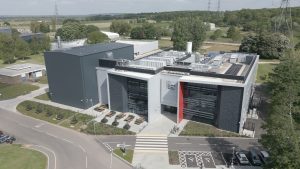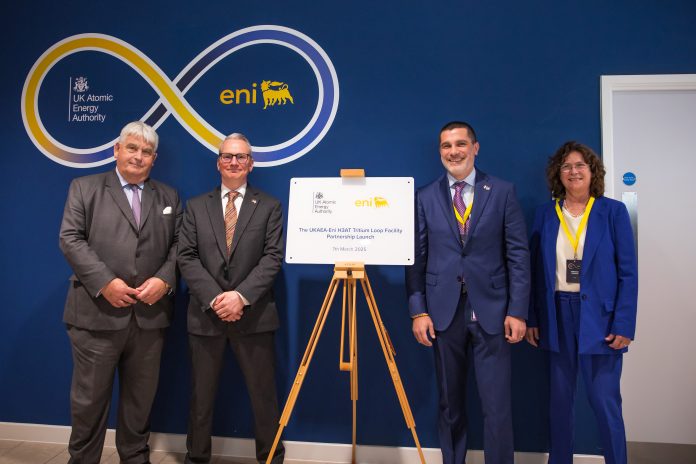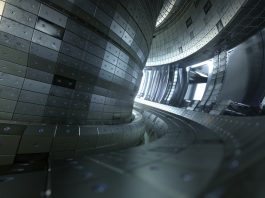The United Kingdom Atomic Energy Authority (UKAEA) and Eni have entered into a collaboration agreement to jointly conduct research and development activities in tritium fuel and nuclear energy.
The collaboration primarily starts with the construction of the world’s largest and most advanced tritium fuel cycle facility, a vital fuel for future fusion power stations.
The UKAEA-Eni H3AT Tritium Loop Facility, located at Culham Campus, will be completed in 2028.
Tritium fuel’s role in advancing nuclear power plants
Tritium recovery and re-use will play a fundamental role in the supply and generation of fuel in future fusion power plants and will be crucial in making the technology increasingly efficient.
Fusion is a form of energy whereby the power of the Sun is replicated on Earth. The fusion process sees two hydrogen isotopes fuse together under intense heat and pressure to form a helium atom, releasing large amounts of emissions-free energy through a safe, cleaner and virtually inexhaustible process.
Fusion energy could be transformational to contribute to energy security and decarbonisation.
The UKAEA-Eni H3AT Tritium Loop Facility is designed to serve as a world-class facility that provides industry and academia with the opportunity to study how to process, store, and recycle tritium fuel.

UK Climate Minister Kerry McCarthy said: “We are proud to be at the forefront of global innovation in clean energy fusion technologies, and this collaboration with Eni marks a significant step towards unlocking the potential of fusion energy, supporting our missions for economic growth, clean power and energy independence.
“The UKAEA-Eni H3AT Tritium Loop Facility will not only position the UK as a leader in the development of fusion fuel technologies but also accelerate progress towards a future of safe, sustainable, and abundant clean energy.”
Key collaborations in fusion energy
UKAEA and Eni will collaborate to develop advanced technological solutions in fusion energy and related technologies, including skills transfer initiatives.
Eni will contribute to the H3AT project with its expertise in managing and developing large-scale projects, helping to de-risk its roadmap. This partnership combines UKAEA’s extensive expertise in fusion research and development with Eni’s established industrial-scale capabilities in plant engineering, commissioning, and operations.
Claudio Descalzi, Eni CEO, said: “Fusion energy is meant to revolutionise the global energy transition path, accelerating the decarbonisation of our economic and industrial systems, helping to spread access to energy, and reducing energy dependency ties within a more equitable transition framework.
“Today, with our UK partners, we are laying the foundations for further progress towards the goal of fusion, which is increasingly concrete and not so far off in time. To continue this virtuous development, international system-level technological partnerships like this one are indispensable.”
Professor Sir Ian Chapman, CEO of UKAEA, added: “The H3AT demonstration plant will set a new benchmark as the largest and most advanced tritium fuel cycle facility in the world, paving the way for innovative offerings in tritium fuel and demonstrating the UK’s leadership in this crucial area of research and development.”









